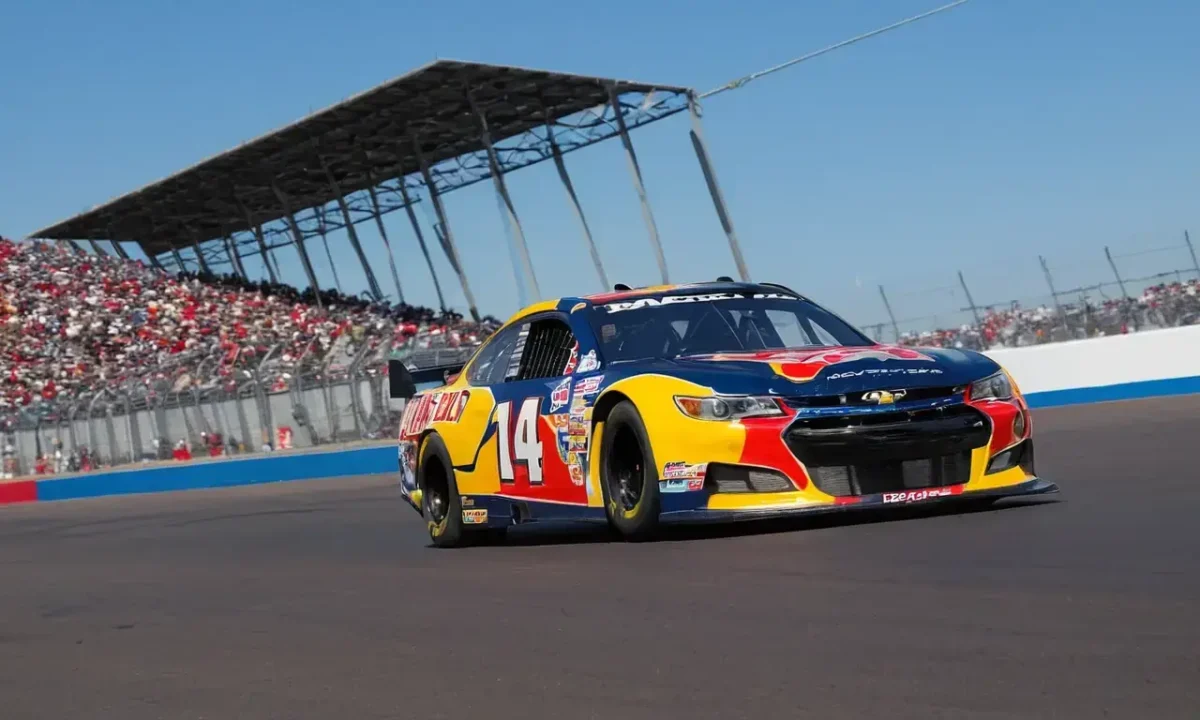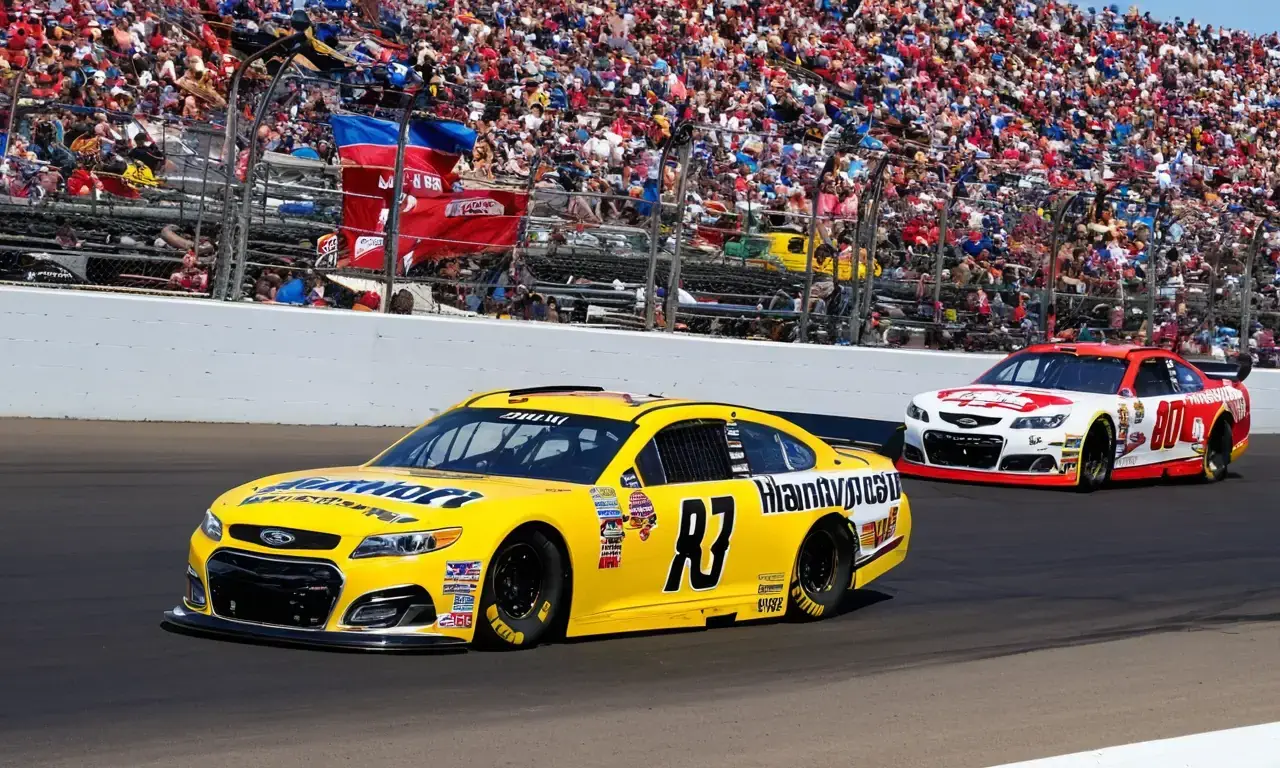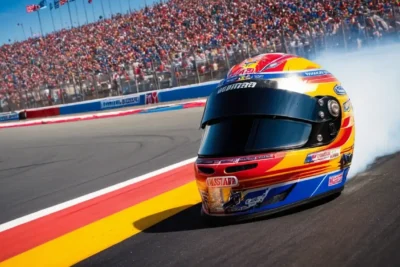
NASCAR Tire Technology: A Key to Victory

NASCAR, short for National Association for Stock Car Auto Racing, is a thrilling motorsports spectacle that captivates audiences worldwide. The heart of this adrenaline-fueled competition lies in the intricate world of racing tires. These specialized rubber compounds are more than just rolling objects; they're crucial components that directly impact a driver's ability to navigate the track and ultimately determine race outcomes. Understanding the role of NASCAR tire technology is essential for appreciating the complexities of this iconic sport.
This article delves into the fascinating realm of NASCAR tire technology, exploring its evolution, key factors influencing tire wear, strategic pit stops, and the delicate balance between speed and tire management. We'll also examine the impact of scuffed tires on race strategy and how modern advancements in tire design are shaping the future of NASCAR racing. By the end, readers will gain a deeper appreciation for the intricate interplay between driver skill, car setup, and tire technology that makes NASCAR such an exciting spectacle.
- The Role of Tires in NASCAR Racing
- Tire Technology and Its Evolution
- Factors Affecting Tire Wear and Degradation
- Pit Stops, Tire Changes, and Strategy
- Scuffed Tires: A Legacy Skill
- Tire Pressure Optimization for Performance
- Data Analysis and Setup Adjustments
- Handling Challenges and Safety Considerations
- The Importance of Driver Skill
- Conclusion
The Role of Tires in NASCAR Racing
Tires play a pivotal role in NASCAR races, influencing everything from acceleration to cornering speed and ultimately determining race outcomes. These specialized tires are designed to withstand high speeds and extreme G-forces while providing grip on the track surface. Their performance is heavily influenced by factors like tire compound selection, pressure settings, and driving style.
NASCAR teams employ a sophisticated approach to tire management, strategically replacing tires during pit stops to maximize their lifespan and optimize car performance throughout the race. This process involves meticulous planning and execution, requiring a deep understanding of tire wear patterns and track conditions. The ability to anticipate tire degradation is crucial for maintaining consistent lap times and maximizing a driver's potential.
Tire Technology and Its Evolution
The evolution of NASCAR tire technology has been marked by continuous innovation aimed at improving performance, safety, and sustainability. Early tires were simple rubber compounds designed for basic grip and durability. However, advancements in materials science have led to the development of more sophisticated tire designs that offer enhanced handling characteristics and increased longevity.
One significant advancement was the introduction of radial tires, which replaced the traditional bias-ply design. Radial tires provide better traction and stability at high speeds due to their unique construction. This shift has significantly impacted race strategies, allowing drivers to push harder and maintain higher lap speeds throughout the event.
Another key development is the use of advanced tire compounds that are specifically formulated for different track surfaces and weather conditions. These compounds offer varying levels of grip and wear resistance, enabling teams to tailor their tire choices based on specific race scenarios. This adaptability allows NASCAR teams to adapt their strategies to changing track conditions and maximize performance throughout the event.
Factors Affecting Tire Wear and Degradation
Tire wear is a crucial aspect of NASCAR racing, as it directly impacts a driver's ability to maintain speed and compete effectively. Several factors contribute to tire degradation, including driving style, track surface characteristics, and environmental conditions.
Driver behavior plays a significant role in tire wear. Aggressive driving styles that involve frequent braking and acceleration can lead to faster tire wear. Conversely, smooth driving techniques that minimize unnecessary stress on the tires can help extend their lifespan. This emphasizes the importance of driver skill and strategic decision-making in managing tire performance.
Track surface conditions also play a crucial role in tire wear. Tracks with high speeds and abrasive surfaces tend to wear down tires more quickly than smoother tracks. Teams must consider these factors when choosing tire compounds and developing race strategies that optimize tire life while maximizing performance.
Pit Stops, Tire Changes, and Strategy

Pit stops are an integral part of NASCAR racing, allowing teams to make crucial adjustments to their cars' setup and manage tire wear effectively. During pit stops, drivers typically change tires, adjust suspension settings, and refuel the car. This process is a critical aspect of race strategy, as it allows teams to optimize performance throughout the event.
Tire changes are often made based on factors like tire wear, track conditions, and driver feedback. Teams analyze data from in-car sensors and tire pressure gauges to assess tire condition and make informed decisions about when to change tires. This process requires a deep understanding of tire behavior and race strategy, allowing teams to adapt their approach based on the evolving race situation.
Scuffed Tires: A Legacy Skill
Scuffed tires are a testament to the skill and experience of NASCAR drivers. These tires, used for only one or two laps, offer an advantage in specific situations where maximizing grip is crucial. However, as racing technology advances, the use of scuffed tires has become less common due to increased emphasis on tire longevity and strategic pit stop management.
Scuffing a tire involves intentionally driving with minimal contact patches to generate more grip. This technique is often employed during late-race stages when maintaining position becomes critical. While it can provide an edge in specific situations, the use of scuffed tires has become less prevalent as teams prioritize maximizing tire life and optimizing overall performance throughout the race.
Tire Pressure Optimization for Performance
Tire pressure plays a crucial role in NASCAR racing, directly impacting grip levels and handling characteristics. Optimizing tire pressure is essential for achieving optimal performance while ensuring safety on the track.
Tire pressure affects several aspects of car performance, including acceleration, cornering ability, and overall stability. Underinflated tires offer reduced grip due to increased rolling resistance, leading to slower lap times. Conversely, overinflation can lead to a loss of responsiveness and handling characteristics, making it difficult for drivers to navigate corners effectively.
Teams use specialized equipment like tire pressure gauges to monitor tire pressures throughout the race. They adjust tire pressures based on factors like track conditions, weather, and driver feedback. This meticulous attention to detail ensures that each tire is operating at its peak performance level, contributing to a smoother ride and improved lap times.
Data Analysis and Setup Adjustments
Data analysis plays a vital role in NASCAR racing, allowing teams to gain valuable insights into their cars' performance and optimize setup adjustments throughout the event. Teams use sophisticated data acquisition systems to collect information about tire wear, track conditions, and driver behavior. This data is then analyzed by engineers who develop strategies for optimizing car setup based on real-time feedback.
Tire wear data provides crucial information about how tires are performing during the race. By analyzing this data, teams can identify areas where tires are wearing down faster than expected and adjust their strategy accordingly. For example, if a driver experiences excessive tire wear in a particular corner, they may need to make adjustments to the suspension or steering geometry to improve handling and extend tire life.
Handling Challenges and Safety Considerations
Handling challenges are an inherent part of NASCAR racing, as drivers push cars to their limits while navigating high-speed corners and challenging track layouts. These situations can lead to unexpected incidents that require quick reactions from both drivers and crew members.
Safety is paramount in NASCAR, and tire failures can pose a significant risk to driver safety. Tire punctures or sidewall cuts can occur due to debris on the track or during aggressive driving maneuvers. In such cases, it's crucial for teams to have contingency plans in place to minimize potential hazards. This includes having spare tires readily available and ensuring that drivers are trained to handle these situations effectively.
The Importance of Driver Skill
Driver skill plays a critical role in NASCAR racing, as skilled drivers can extract the most performance from their cars while navigating challenging track conditions. Their ability to anticipate tire wear patterns, adjust driving styles, and make strategic decisions under pressure is essential for success.
Drivers must be able to adapt their driving style based on factors like track conditions and tire wear. For example, if a driver notices that their tires are wearing down faster than expected in a particular corner, they may need to adjust their braking points or throttle control to minimize stress on the tires. This ability to anticipate challenges and make informed decisions is crucial for achieving consistent performance throughout the race.
Conclusion
Tire management is a critical aspect of NASCAR racing, as it directly impacts a driver's ability to compete effectively and maintain speed throughout the event. From tire pressure optimization to strategic pit stops, teams must employ a variety of techniques to maximize tire life while optimizing performance. As racing technology continues to evolve, so too will the importance of tire management in NASCAR, ensuring that drivers and teams continue to push the boundaries of what's possible on the track.
Leave a Reply





Related Links